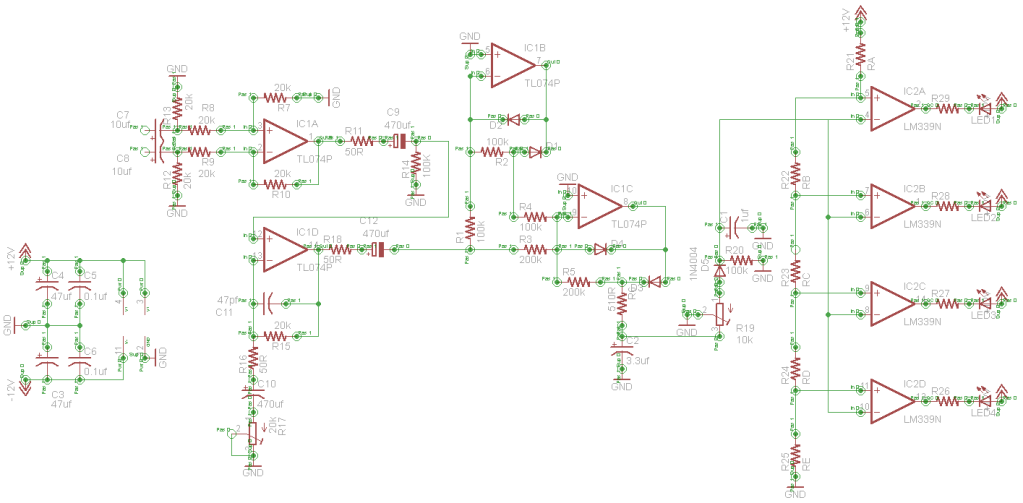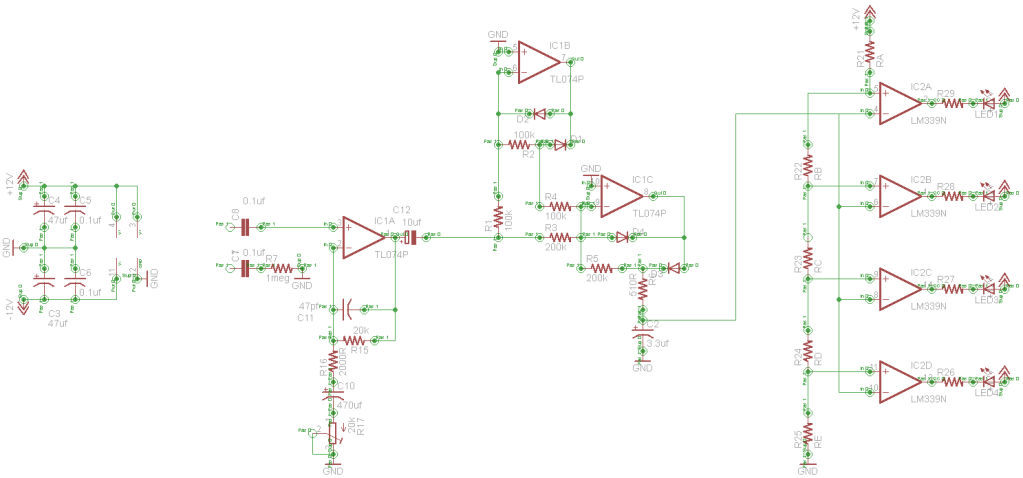Well I have plagiarized a handful of circuits to make a LED board that I think is really adaptable and usable for a variety of monitoring needs.
In essence, it starts off with a balanced line receiver (which could be easily adapted to an unbalanced buffer) which then runs into an OPAMP that allows for gain. These are pretty standard circuits.
After this the signal hits a Precision Full-Wave Peak Detector [from p.9 of the LM3916 datasheet].
Then to the quad comparator LM339 LED schematic that I lifted from somewhere. I have left the values off for the resistors in this schematic - not just because I don't necessarily know them but also because these will vary depending on what people want each LED to correspond to.
I suspect that there are some redundant parts - perhaps some blatant errors.
Assuming my board layout is reasonable... I think this could be a useful project for many DIY projects.
I wanted to check in with people to make sure I was on the right course and also if there were any errors.

CC
In essence, it starts off with a balanced line receiver (which could be easily adapted to an unbalanced buffer) which then runs into an OPAMP that allows for gain. These are pretty standard circuits.
After this the signal hits a Precision Full-Wave Peak Detector [from p.9 of the LM3916 datasheet].
Then to the quad comparator LM339 LED schematic that I lifted from somewhere. I have left the values off for the resistors in this schematic - not just because I don't necessarily know them but also because these will vary depending on what people want each LED to correspond to.
I suspect that there are some redundant parts - perhaps some blatant errors.
Assuming my board layout is reasonable... I think this could be a useful project for many DIY projects.
I wanted to check in with people to make sure I was on the right course and also if there were any errors.

CC



































